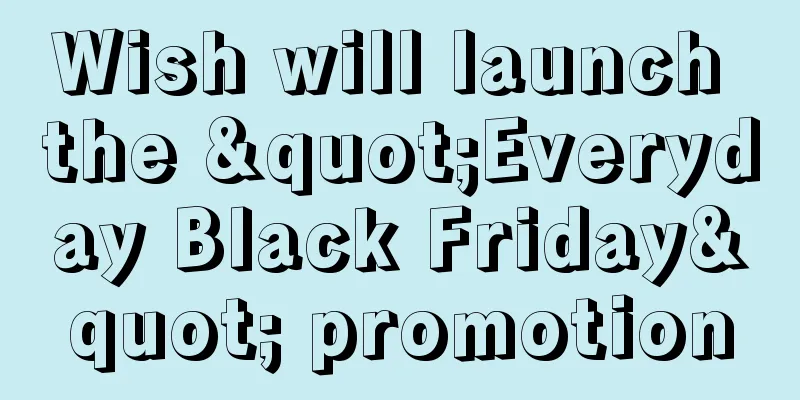When products are increasingly raising the payment scythe, where will the user experience go?

When the Internet industry first started, it was famous for being free and losing money to gain publicity. After more than 20 years of ups and downs, after the high growth rate slowed down, payment was gradually put on the table. Do you need to watch a 120-second ad before watching a video? 5G network download speed is still stuck at 5k/s? You were listening to a song when you found out that your membership was suddenly cut off? Whether it is an online entertainment platform, a news subscription service or a software application, the paid model is becoming the main way to make money. However, this payment-oriented trend raises a key question: when products are all raising the payment sickle, where will the user experience go? This article will start from membership products and deeply explore the payment rate standards of different types of products, balancing user experience while pursuing payment rates. Whether you are an entrepreneur, product manager or marketer, you can get valuable dry goods. Without further ado, let's go straight to the main text. Enjoy: 01 Battle for survival: How to achieve the payment rate target1. The importance of payment rate to product profitability and sustainable developmentThere are four common ways to make money on the Internet: advertising, games, e-commerce, and membership. After going through the barbaric era, as traffic becomes more and more expensive and more and more difficult to obtain, the paid membership business model is becoming a new round of dividends for the growth of various platforms or products. For membership products, the payment rate (number of paying users/number of active users) directly determines the source of revenue for the product. If the product cannot attract enough paying users, it will be difficult for the product to make a profit. The payout rate is critical to the sustainability of a product. Products need to have enough revenue to support operations, develop new features, conduct marketing, and expand their user base. By increasing the payout rate, products can establish a sustainable business model and provide a stable foundation for future development. The payment rate also reflects the user's recognition of the value of the product. If users are willing to pay for a product, it means that they believe the product provides sufficient value and benefits. Taking the SaaS industry as an example, the Rule of 40 is an easy-to-understand metric that combines revenue growth with profit margin and can be used as a simple way to assess a SaaS company’s ability to manage growth and profitability: Growth Rate + Profit Margin > 40%. 2. Overview of payment rates for different types of membership productsThe payment rates of different types of membership products vary depending on the product type, market demand and business model. The following are some common types of membership products and their payment rates: For example, Bilibili’s premium membership payment rate increased by 250,000 subscriptions in Q2 (average monthly active users: 324 million), but it was less than the expansion of the overall traffic pool, and the payment rate further dropped to 6.3%. For example: By the end of 2022, the cumulative annual paying users of Kingsoft WPS was 29.97 million, and the cumulative annual paying rate calculated based on 242 million PC monthly active users as the denominator was approximately 12.4%. 02 Battle of Prosperity: User Experience and User Retention1. User experience plays a key role in product successUser experience plays a critical role in product success and has a significant impact on engagement, loyalty, and word of mouth.
Engagement, loyalty and word of mouth ultimately lead to user retention. Providing an engaging experience, building user loyalty and promoting positive word of mouth can effectively improve user retention. 2. Overview of retention rates of different types of productsRetention rate values will vary depending on different Internet product types, market environment and user behavior. Generally speaking, higher user retention rates are generally considered a good performance, but the specific values may vary by industry and product. 03 Both ends of the scale: the battle between user experience and payment rate1. Potential conflicts and contradictionsA payment-oriented approach may have a negative impact on user experience.
2. Balancing strategies and methodsIn order to balance the conflict between payment rate and user experience, we can try the following strategies and methods: (1)Personalized pricing Provide different pricing plans based on the needs and payment capabilities of different user groups. Personalized pricing can be determined based on the user's usage frequency, feature requirements, or other specific factors to ensure that users can choose a payment option that suits their needs and budget. For example, Netflix’s tiered packages are often imitated by domestic platforms such as iQiyi, Youku, Tencent Video and Mango TV. (2) Increase added value Provide additional added value to paying users so that they can feel the actual benefits of purchasing the paid version. This can include exclusive content, advanced features, personalized services, exclusive events, etc. By providing unique and attractive added value, the product can increase user recognition and satisfaction with the paid version. For example: Costco members can enjoy more offline exclusive services. (3) Optimize the free version Ensure that the user experience of the free version is still attractive and valuable to retain free users and attract more users. Optimize the interface design, functions, and content of the free version so that it can meet the basic needs of users and provide a good user experience, thereby providing users with motivation to upgrade to the paid version. For example, there is almost no difference between Slack’s free product and paid product. All users can use Slack’s full functionality, which increases user dependence and cultivates user usage habits, leading to paid users. (4) Providing trial opportunities In the boundary between free and paid, you can also provide trial opportunities. Let users experience the value of paying at a low cost. After they fully recognize it, there will be a higher conversion rate. There is also a mature model in the industry: Freemium or Free trail. For example, CamScanner offers a 7-day free trial before signing a contract; Fan Deng Reading offers new users a free trial period; and QQ Music offers a 1-yuan membership for the first month. (5) User participation and feedback Actively interact with users and listen to their opinions and feedback. Understand users' needs and concerns, and continuously improve products based on user feedback to improve user experience and satisfaction. The process of user participation can increase users' investment and loyalty to the product. For example, Slack once released a preview version in an experience mode, inviting 8,000 people to use it and collect feedback. (6) Advertising balance and personalization Seek a balance in ad display to ensure that ads do not overly disrupt the user experience. Reduce the number and disruption of ads while providing a personalized ad experience to ensure that ad content matches user interests and preferences, making ads more attractive and effective. For example, Xiaohongshu’s discovery and search pages support advertising, pay attention to the quality of advertisements, and clearly mark them to give users expectations. (7)Provide high-quality user support Whether it is a free user or a paid user, it is important to provide timely, professional and personalized user support. Ensure that users can get the help and support they need to solve problems, and improve user satisfaction and loyalty. For example, ProcessOn embeds a help module in the lower right corner of the page to facilitate users to find online customer service, provide feedback, and aggregate frequently asked questions to the help center. 04 ConclusionSurvive and thrive: payment rates and user experience are at opposite ends of the scale. There is nothing shameful in charging fees. This is not only crucial to the sustainable development of the product, but also reflects the user's recognition of the product's value. On the road of guiding users to pay, not treating users as freeloaders or leeks, and fully respecting user choices can also achieve a win-win situation for products and users and become the underlying pillar of membership operations. The above is the content of "Balancing User Experience and Payment Rate", which is based on user growth work practice & research. If you have any good insights, please leave a message in the comment area below for discussion. |
<<: Official accounts suddenly upgraded their “publish” function. Has WeChat come to its senses?
>>: There are 4 stages in doing business on Xiaohongshu. Which stage are you in?
Recommend
How does Proya, the leading Chinese cosmetics brand, develop its global presence? | Global Research
This article deeply analyzes how PROYA has achieve...
Content Operations: What should I do if my article has very few clicks?
In the fast-food era, an article that fails to cap...
Is it necessary to bind a legal person to Amazon payment? What are the payment accounts?
Amazon merchants should all know that Amazon's...
The million-dollar hit video gained 300,000 followers. Is the music section of Bilibili finally welcoming a "hard-working" UP host?
The music section UP @BBoxer Chieftain gained over...
Durex live broadcast, 3 million people just watched but didn't buy
According to relevant data, the cumulative number ...
How to do Wish? Can I make money?
Wish, as one of the world's largest mobile sho...
Review: 3 mental barriers I overcame in operational growth
In your operations, are you still wavering between...
How to establish effective connection between brands and consumers with the help of communication symbols
In brand marketing, communication symbols are a ke...
Talking about brands from a story of a popular homestay in Sanya
This article explores the question of whether and ...
Behind the popularity of Citywalk in Beijing, Shanghai and Guangzhou: Tourist "special forces" pay hundreds of yuan for a walk, and small and beautiful businesses are difficult to become sustainable businesses
The most popular form of tourism has changed from ...
2 yuan tea hits the "crispy" young people, selling 1.15 million cups in one day
This summer, Chinese herbal tea substitutes have u...
How to modify the Shopee store profile picture? How to name it?
After we open a shop on Shopee, we need to set up ...
With only one person, one dog and one bicycle, he gained 100,000 followers on Bilibili
The video account "Xiaohui's Drifting&quo...
What will happen if Shopify does not renew? How much money is needed to run Shopify?
Shopify's subscription model allows merchants ...
Where is the entrance to the eBay Chinese platform? Where is the activity entrance?
Now when you start a business, you will basically ...









